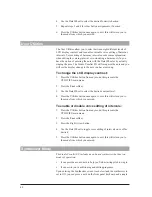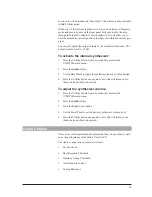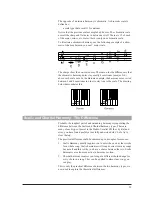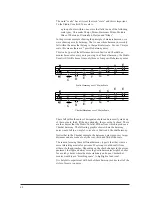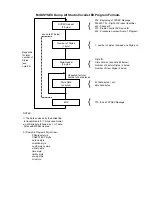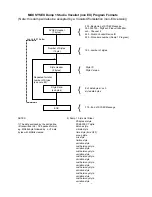
59
The opposite of a diatonic harmony is chromatic. A chromatic scale is
defined as:
a scale type that uses all 12 semitones.
Notice that the previous scale example had 8 notes. The chromatic scale
uses all the sharp and flat notes in between as well. There are 12 of each
of the major, minor, etc. scales; there is only one chromatic scale.
To illustrate a chromatic harmony, see the following example of a chro-
matic 3rd above harmony on our C major scale.
The sharps show the non-scale notes. The reason for the difference is that
the chromatic harmony notes stay exactly 4 semitones (a major 3rd )
above each scale note. In the diatonic example, the harmony notes varied
between 3 and 4 semitones in order to stay true to the scale. The drawing
below demonstrates this.
Scalic and Chordal Harmony; The Difference
Probably the toughest part of understanding harmony is pinpointing the
difference between the Scalic and Chordal harmony types. There are
many of each type of preset in the Studio Vocalist EX that, by trial and
error, you have found useful yet not fully understood why. Let’s try to
clear that up.
The practical difference could be summed up in a couple of sentences:
1.
Scalic Harmony usually requires you to enter the one key that works
for a whole song. Scalic harmonies will sound correct in many songs
but not all and this is why you have a choice between the two. Scalic
harmonies are also more active in harmony motion.
2.
Chordal harmony requires you to input a different chord change for
every chord in a song. They can be applied to almost any song you
can play.
This is only the practical difference between the two harmony types, we
now need to explore the theoretical differences.
Содержание STUDIO VOCALIST EX
Страница 1: ...EX Version 1 10 ...
Страница 6: ...4 ...




